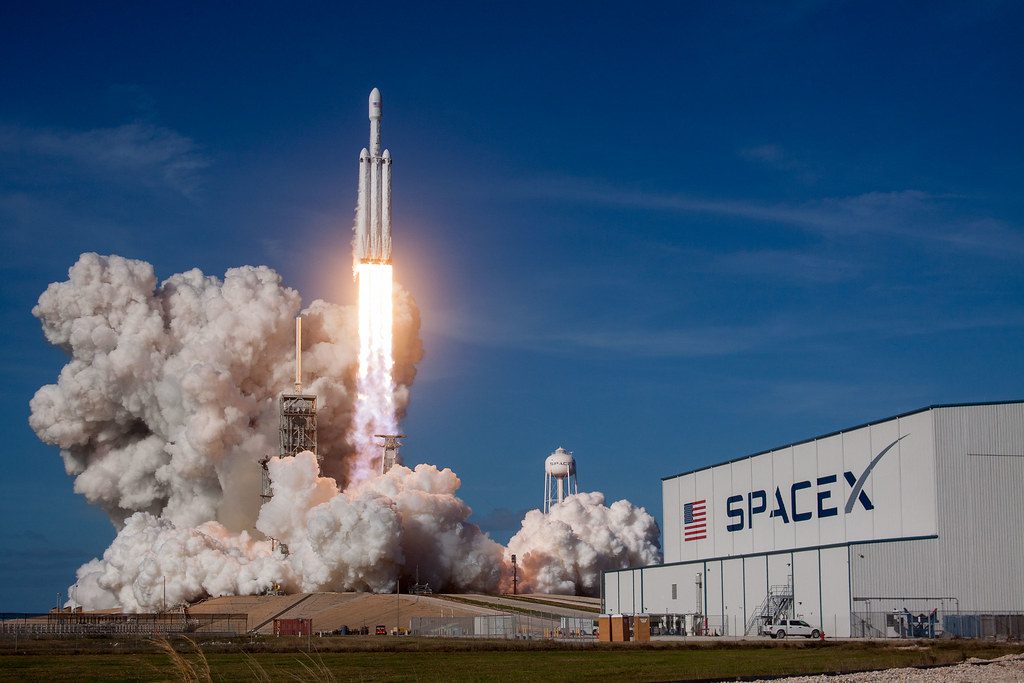According to documents submitted by the company to the Federal Communications Commission on Thursday, SpaceX plans to conduct the first test flight of an interstellar spacecraft from Texas before splashing off the coast of an island in Hawaii. The orbital flight test will mark the first time SpaceX has stacked the two elements of its massive starship system. This is the next key development step in his quest to build a rocket that will one day land on Mars.
As stated in the document, the super heavy propellant will launch the “starship” from SpaceX’s Boca Chica facility in Texas, and it will detach after flying in the air for about three minutes. In about five minutes, the boost phase will return to Earth and splashdown in the Gulf of Mexico, or as SpaceX put it: “It will execute a partial return and land in the Gulf of Mexico about 20 miles offshore.”
At the same time, the interplanetary spacecraft (the top of the entire rocket system) will continue to go into orbit, almost completing the entire trip around the earth, and then fly back to Hawaii over Hawaii about 90 minutes after launch from Texas. The interstellar spacecraft’s goal is to make a “powered, directed landing” in the ocean some 62 miles off the northwest coast of Kauai, the state’s northernmost island.
The document did not specify a specific date for the starship’s orbital flight. CEO Elon Musk and SpaceX President Gwynne Shotwell said this could happen by the end of 2021. However, an email accompanying the filing of the application on Thursday noted that it could happen anytime next year. that is March 1, 2022. The height of the interstellar spacecraft is 72 miles, a very low orbit altitude north of the boundary between space and Earth’s atmosphere.
SpaceX’s Starship system is the core of Musk’s goal of daily interplanetary travel. The system is designed to transport humans and up to 100 tons of cargo to the Moon and Mars. He recently won a $ 2.9 billion contract. This is the first time NASA has taken astronauts to the Moon since 1972. SpaceX has launched five prototypes of high-altitude interstellar spacecraft. Since December last year, its South Texas rocket facility successfully landed on its fifth test flight earlier this month. More suborbital “jump” tests are scheduled to take place in the next month.
SpaceX said in the document that whenever it occurs, the orbital test will show that it is impossible to use a computer-simulated spacecraft maneuver. “SpaceX intends to collect as much data as possible during the flight to quantify the input dynamics and better understand the conditions encountered by the aircraft in flight status, which is difficult to predict or replicate accurately.” SpaceX said the flight data collected from the Starship tests “will anchor any changes to the aircraft design … and build better models for us to use in our internal simulations.”
Musk once envisioned the use of interstellar spacecraft for rapid transportation in orbit between any two cities on Earth. This is an ambitious (or rather bleak) idea called point-to-point travel. For example, a Startup? Between New York and London, it takes an hour. Although the 90-minute drive from Texas to Hawaii is a small test, it still fits this idea a bit. It’s been a while since SpaceX or Musk discussed any updates to the peer-to-peer travel plan.
It has caused quite a bit of FOMO in the space industry, probably due to the ire of NASA. SpaceX is racing to test Starship’s deep-space mission, whose deadline is to send humans to the lunar surface by 2024.

